Lucky Thirteen
The good folks who own the Winchester mansion, in San Jose, California, have engaged in a clever bait-and-switch campaign. On the Internet, on half-hour TV shows on the paranormal, and on billboards all along Interstate-80, I-99 and I-5, the Winchester Mystery House is hyped as the monument of crazy widow Sarah Winchester, who listened to spirits and built staircases to nowhere.
After you park in the parking lot across Winchester Street from Santana Row and next to Century 21 Cinemas; after you enter the large and chock-full gift shop and purchase your tickets for the tour; after you wait in the tree-lined courtyard for your tour to be called; after you meet your guide and begin to see the house, you find out that there was a lot more to Sarah Pardee Winchester than séances and the number 13.
Sarah’s History
Sarah Pardee was about 22 years old in 1862, when she married William Wirt Winchester, son of the president of the Winchester Repeating Arms Company. Sarah was the daughter of a carriage manufacturer; an educated and cultured young woman who spoke four languages and played several musical instruments. William and Sarah had a daughter who died in infancy. William suffered from tuberculosis, and died several years later. Within a year of his death Sarah Winchester lost her mother-and-father-in-law as well.
This left Sarah with an extraordinary fortune and a broken heart. The rumor is that she visited a psychic in Boston and asked why her life had been filled with such misfortune. The psychic told her that she was being punished by the spirits of all those who had been killed by Winchester weapons. To make amends, Sarah was to move across the continent, find an unfinished house, and continue building it the rest of the days of her life. This would appease the spirits.
It is possible that this was the motivation for the widow’s move to San Jose. It might also have been that it was as far as she could get from the place that took her daughter, husband, and the whole Winchester side of the family.
The mansion was a work in progress her entire life. It has 160 rooms. Sarah Winchester did not draw plans, but she met with her head carpenter regularly to discuss what her next project or plan was. The amazing thing about the house is not the size; it is the quality and beauty of the workmanship. Sarah had what amounted to an unlimited fortune in those days and her annual income was about $365,000. She owned nearly one half of the Winchester stock, and all this was before the profit from the orchard she owned and managed. Our tour guide told us that she had $1,000/day income. To give that some context, Sarah paid her servants $3/day, and that was twice the going rate. To buy a rare and stunningly beautiful stained glass window, the most expensive window in the house, Sarah had to spend a day-and-a-half’s worth of money.
The front of the house with the post-Sarah Winchester-era formal gardens. Sarah had a taller hedge and a “wilder” look to her garden.
The Mansion Tour
Yes, there are doors that open onto walls, and, scarier, doors that open onto air. There are strange staircases, but frankly, the staircases are the most easily explained. We went through a storage room that contains left over wall-paper (a type that was used on walls in the White House and on the Titanic, and is still made today—it cost $1.00/foot then, now it’s $200/foot) and many Tiffany stained glass windows that were never installed. The storage room was part of the original six-room farmhouse that Sarah bought and began remodeling. Our guide told us that we would be going to the remodeled hay loft, and, to get there, we would take “the crazy staircase.” The staircase has seven switchbacks, risers that are two-and-a-half inches high, and goes 110 linear feet to rise nine feet in the air. It’s like the strangest airport line you’ve ever shuffled through. The two-inch high stairs seem weird indeed until you remember that four-foot-ten inch tall Sarah suffered from severe and progressive arthritis. Suddenly the short, easy steps make sense, and so does the electric elevator Sarah had installed several years later.
There is a staircase that runs right into the ceiling. This looks more like a drawing or arithmetic error than any crazy-town spiritual design. If you know anyone who builds, they can tell you that staircases are not as simple as they seem, and that people frequently make mistakes on the geometry. If I were an educated, cultured woman who had messed up the basics on a staircase, I might blame the spirits too.
Winchester did like the number 13, and a web motif shows up in designs and stained glass throughout the house. Behind Sarah’s elegant second-floor bedroom is the “séance room,” to which Sarah allegedly repaired each night to commune with the spirits. Perhaps she did, but it is interesting to note that one window in the room looks down on the kitchen, at such an angle that tiny Sarah could see down, but someone looking up from the kitchen would not be able to see her, and another glass doorway looks down into the servant’s kitchen. Plainly that room served more than one purpose.
This is an example of the web design that shows up in wood carvings, leaded glass and stained glass throughout the house. It’s possible that it has some spiritual significance; or maybe Sarah just liked it.
Sarah also designed counters in the kitchen with grooves that run down toward the sink. When servants were washing vegetables or dishes, less time was needed to wipe down the counters afterward. Between the kitchen and the glamorous Venetian dining room, Sarah built a pass-through, so that servants didn’t have to leave the kitchen to carry food all the way into the dining room. Sarah also had a hydraulic piston in the house. It has its own room, and it’s installed above ground, horizontally. This is very unusual; most pistons were installed vertically, in the ground. Sarah had lived through the 1906 earthquake; clearly the piston was more easily worked on or repaired aboveground. Sarah made this choice probably for the safety and convenience of her workers. She also paid her servants, groundskeepers and carpenters three dollars a day (in cash) which was twice the going rate, and allowed them to have their families at the house. She was probably difficult to work for, but she made it worthwhile.
(I did wonder if she lost a lot of servants — no, I mean literally, lost. I don’t know how long it would take someone to learn that house, and I imagine a new serving girl, lugging a now-cold pot of tea and some stale cookies on a tray, wandering helplessly for days until she stumbled across the sewing room, or something.)
For Anyone With a Steam-punk Sensibility
Sarah was the daughter of a highly successful carriage manufacturer, and married a man whose company’s repeating rifles changed the face of warfare. It isn’t surprising that she was interested in technology. She seemed to have a practical and technical mind, and was forward-looking in lots of ways. The house is set up for passive water-recycling (water from the plants in the conservatories fell onto the zinc floor, through the drain, and was recycled in the gardens; water from the hydraulic piston that lifted the freight elevator was also recycled.) She had a gas plant and gas lines to the house several years before it was common. Later she wired the house for electricity. Inside the house, Sarah had a call box in the servants’ quarters; a button pressed in any of the main rooms rang a bell and dropped a card in the servants’ rooms. Years before alternating current, this device ran on batteries.
The second elevator, an Otis, was electric-powered.
The Winchester mansion also had a garage with a built-in car wash, complete with a boiler and a hose suspended from the ceiling, much like self-service carwashes today… only this was built in 1910.
The boiler used to heat the water to wash that stubborn mud off the fenders of Sarah Winchester’s cars
Just like we use today. By the way, that’s Jim, our “behind the scenes” tour guide
I wish my garage were this neat.
The Winchester mansion is a place where the technology of the time was used practically and innovatively. Anyone who wants to write a steam-punk novel, and “push” Victorian era tech in some way, could use this house as a template.
Crazy as She Wants to Be
Sarah Winchester probably was mentally ill. It doesn’t seem like she was schizophrenic or paranoid; I think now we might consider the need to keep building more of an anxiety or impulse disorder – maybe a weird type of hoarding impulse. The old saying seems to be true — if you are mentally ill and wealthy, we tend to call it “eccentric.”
The estate also has stunning gardens and fountains. Pictures are coming!

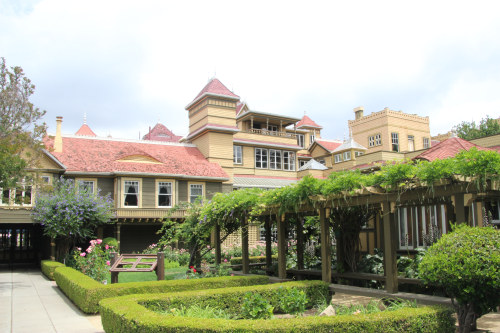
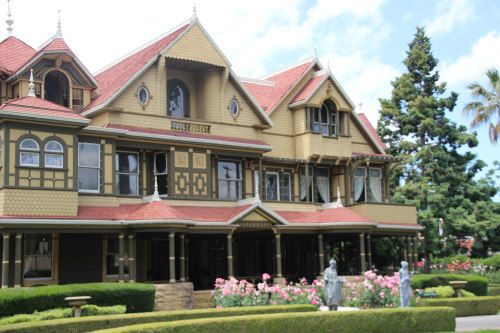
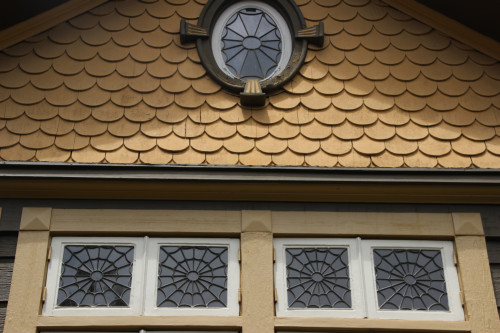
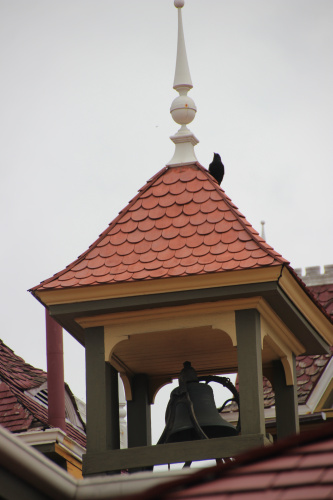
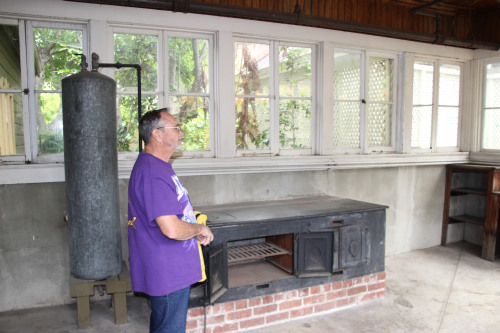
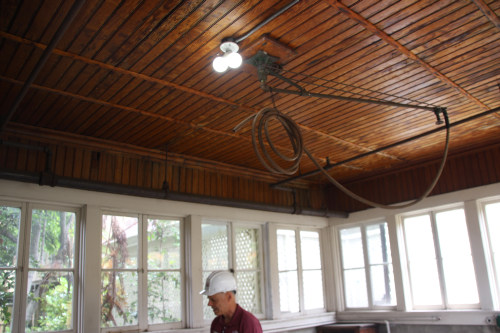

There is certainly a great deal to learn about this topic.
I really like all of the points you made.